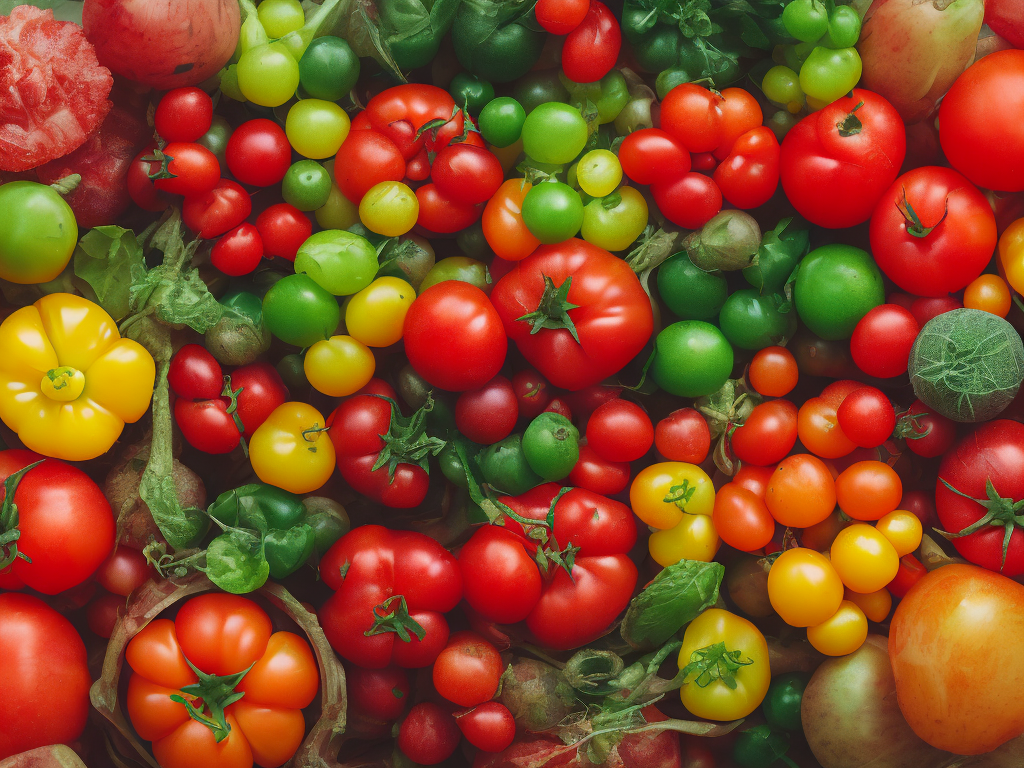
When it comes to the difference between fruits and vegetables, it can be a bit confusing. Many people assume that anything that grows in the ground is a vegetable, while anything that grows on a tree is a fruit. However, this is not always the case. While some fruits and vegetables are pretty straightforward, others can be a bit more complicated to classify. In this article, we will discuss the difference between fruits and vegetables.
The Scientific Definition
First and foremost, it's important to understand the scientific definition of fruits and vegetables. Fruits are the mature ovaries of flowering plants that contain seeds. In other words, they are the part of the plant that holds the seeds and helps to facilitate reproduction. Some common fruits include apples, bananas, oranges, grapes, and strawberries.
Vegetables, on the other hand, are part of the plant that we eat but are not the reproductive part of the plant. This can include stems, leaves, roots, and flowers. Some common vegetables include lettuce, carrots, broccoli, beets, and cauliflower.
So, while it may seem like an apple and a carrot are completely different, technically speaking, they both fall under the category of "plant parts that we eat."
Culinary Definition
While the scientific definition is important to understand, the culinary definition is the one that most people are familiar with. The culinary definition is based on how we use and consume the food. Fruits are generally sweet and are eaten raw or used in desserts and other sweet dishes. Vegetables are typically savory and can be eaten raw or cooked in a variety of ways.
Some fruits that are commonly used in cooking include apples in pies and tarts, tomatoes in sauces, and avocados in guacamole. Vegetables are used in a wide variety of dishes, such as salads, soups, stews, and stir-fry dishes.
Exceptions to the Rule
While the scientific and culinary definitions work in most cases, there are exceptions to the rule. Some foods are botanically classified as fruits but are commonly classified as vegetables. One example of this is the tomato. Technically, the tomato is a fruit because it contains seeds and is grown from a flower. However, because it is usually cooked and used in savory dishes, it is commonly referred to as a vegetable.
Another example is the avocado. Like the tomato, the avocado is technically a fruit because it contains a seed. However, because it is not generally sweet and is used in savory dishes, it is often classified as a vegetable.
Conversely, some foods are botanically classified as vegetables but are commonly classified as fruits. One example of this is the rhubarb. Although it is often used in desserts, it is actually a vegetable because it does not contain seeds and is not grown from a flower.
So, while the scientific classification is black and white, the culinary classification can be a bit fuzzy.
Nutritional Differences
While fruits and vegetables may be used differently in cooking, they also have different nutritional profiles. Fruits are typically higher in sugar, while vegetables are lower in sugar and higher in fiber.
Fruits are also a good source of vitamins and antioxidants, such as vitamin C and beta-carotene. Some fruits are also high in potassium, such as bananas and avocados.
Vegetables, on the other hand, are a good source of vitamins, minerals, and fiber. They are typically low in calories and can help to fill you up without adding a lot of extra calories to your diet. Some vegetables, such as leafy greens, are also high in vitamin K, which is important for bone health.
Conclusion
In conclusion, the difference between fruits and vegetables can be a bit confusing. While the scientific definition is based on the reproductive parts of the plant, the culinary definition is based on how we use and consume the food. While most fruits are sweet and eaten raw or used in sweet dishes, vegetables are typically savory and used in a variety of dishes.
However, there are exceptions to the rule, such as the tomato and avocado, which are technically fruits but are commonly classified as vegetables. While there may be some confusion around the classification, it is important to understand the nutritional differences between fruits and vegetables. Both are important parts of a healthy diet and can provide a variety of vitamins, minerals, and other nutrients.
 Self-Instruct
Self-Instruct